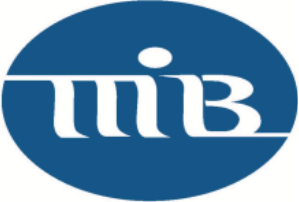There are changes that arrived with the new year of 2024 to Home Mortgage Disclosure Act (HMDA) compliance for banks and thrifts in many areas. No, the Consumer Financial Protection Bureau (CFPB) is not repealing Regulation C or adding more detail to the required data we collect and report. The existing rule is still in place.
The changes we will look at here are driven by the decennial (every 10 years) adjustments by the Office of Management and Budget (OMB) to geographic units used by the federal government, including the Census Bureau, for statistical purposes. The particular geographic units that impact bank and thrift HMDA compliance are Metropolitan Statistical Areas (MSAs) since they are a qualifying location factor for lenders in determining HMDA coverage.
The OMB’s changes will also have possible effects on bank and thrift compliance with the Community Reinvestment Act (CRA) in the drawing of institutional CRA “assessment areas.”
These latest changes were effective when issued by OMB — July 21, 2023 — so they can impact 2024 HMDA coverage.
OMB Action
The OMB completed a process of delineating Core Based Statistical Areas (CBSAs) based on 2020 Census data and the American Community Survey and Census Population Estimates Program for 2020 and 2021. A CBSA is a geographic entity associated with at least one core of 10,000 or more population, plus adjacent territory that has a high degree of social and economic integration with the core as measured by commuting ties. The standards designate and delineate two categories of CBSAs: Metropolitan Statistical Areas and Micropolitan Statistical Areas.
The general concept of a metropolitan statistical area is that of an area containing a large population nucleus and adjacent communities that have a high degree of integration with that nucleus. The concept of a micropolitan statistical area closely parallels that of the metropolitan statistical area, but a micropolitan statistical area features a smaller nucleus. The purpose of these statistical areas is unchanged from when metropolitan areas were first delineated: The classification provides a nationally consistent set of delineations for collecting, tabulating and publishing federal statistics for geographic areas.
The new delineations are found in OMB Bulletin 23-01 by scanning the QR code.
https://www.whitehouse.gov/wp-content/uploads/2023/07/OMB-Bulletin-23-01.pdf
HMDA Coverage
Regulation C covers any “financial institution,” as defined by the regulation and its underlying HMDA statute. “Financial institution” means, in part, a bank, savings association or credit union that:
- On the preceding Dec. 31, had assets in excess of the asset threshold established and published annually by the CFPB for coverage by HMDA, based on the year-to-year change in the average of the Consumer Price Index for Urban Wage Earners and Clerical Workers, not seasonally adjusted, for each 12-month period ending in November, rounded to the nearest million — $56 million for 2024 HMDA coverage.
- On the preceding Dec. 31, had a home or branch office in a Metropolitan Statistical Area (MSA). [Micropolitan Statistical Areas have no HMDA impact.]
- In the preceding calendar year, originated at least one home purchase loan (excluding temporary financing such as a construction loan) or refinancing of a home purchase loan, secured by a first lien on a one- to four-family dwelling.
- Meets one or more of the following two criteria: is federally insured or regulated; or the mortgage loan referred to in the previous bullet was insured, guaranteed or supplemented by a federal agency or was intended for sale to Fannie Mae or Freddie Mac.
- Meets at least one of the following criteria in each of the two preceding calendar years: originated at least 25 closed-end mortgage loans that are not excluded by §1003.3(c)(1) through (10) or (c)(13), or originated at least 200 open-end lines of credit that are not excluded by the cited section of Regulation C.
There are also similar qualification criteria for for-profit mortgage lenders that are not banks, thrifts or credit unions, which we will not detail here.
The qualification criterion impacted by OMB’s action is the geographic one, the second bullet above. If a financial institution that otherwise meets HMDA coverage criteria has an office in an MSA on Dec. 31, then it is covered by HMDA for the following year. For many lenders, determining HMDA coverage is a one-time exercise (other than those who are right around the asset-size threshold).
Montana MSA Changes
OMB made some significant MSA changes that impact banks and thrifts in Montana, and their compliance with HMDA requirements. Only one existing MSA was unchanged — Great Falls MSA. Changes were made to the other two existing MSAs, and two new MSAs were designated as follows:
- Billings MSA — Golden Valley County dropped from MSA; Stillwater County added.
- Missoula MSA — Mineral County added.
- Bozeman MSA — New MSA comprised of Gallatin County.
- Helena MSA — New MSA comprised of Broadwater, Jefferson, and Lewis and Clark counties.
All the details of the new Montana geographic delineations can be found in the OMB Bulletin mentioned above. The list of MSAs and micropolitan statistical areas by state is in List 6 (with Montana on pages 163-164) of the OMB Bulletin, while five additional lists in the bulletin give other breakdowns of the geographic delineations, including the counties included in each.
HMDA Impact
In 2023, there was no impact for HMDA reporting because the new MSA delineations were not in effect on Dec. 31, 2022.
However, they were in effect Dec. 31, 2023, which has the following impacts:
- Banks and thrifts with offices in the two new MSAs or in Mineral or Stillwater counties, and in no other MSA counties, had to begin collecting HMDA data on Jan. 1, 2024, and have to make their first reports of that data by March 1, 2025.
- Banks and thrifts whose offices in Golden Valley County have made them subject to HMDA reporting (i.e., no offices in other MSA counties) will no longer have to collect HMDA data beginning in 2024. (Note that such banks would still be obligated to report their 2023 HMDA data by March 1, 2024.)
If your institution has an office in any of the counties affected by the MSA changes, be sure to review how this action affects your HMDA compliance beginning in 2024.
CRA Impact
MSAs affect the CRA compliance efforts of banks and thrifts, too. They come into play in drawing up an institution’s CRA assessment area (AA), as well as in the small business and small farm lending disclosure statements prepared by regulators annually for institutions reporting their data (all except for “small” retail banks and thrifts).
The CRA rules require that an institution’s CRA AA generally consist of one or more MSAs or metropolitan divisions — using the MSA or metropolitan divisions boundaries that were in effect as of Jan. 1 of the calendar year in which the delineation is made — or one or more contiguous political subdivisions (e.g., counties, cities or towns).
A CRA AA may not extend substantially beyond an MSA boundary or beyond a state boundary unless the assessment area is located in a multistate MSA. If a bank or thrift serves a geographic area that extends substantially beyond a state boundary, the bank must delineate separate AAs for the areas in each state. If a bank or thrift serves a geographic area that extends substantially beyond an MSA boundary, it must delineate separate AAs for the areas inside and outside the MSA.
The regulators prepare annually, for each MSA and the nonmetropolitan portion of each state, an aggregate disclosure statement of small business and small farm lending by all institutions subject to reporting of that data (all except “small” retail banks and thrifts).
Therefore, the redrawn MSA boundaries might have an impact on your institution’s CRA compliance. Each bank and thrift with the affected counties in its CRA AA should review its delineation to make sure that the changes do not require an adjustment to those delineations. If any adjustments are needed, they should be made by April 1 — when any updating of CRA public files must be accomplished (including the map of your CRA AA).
The OMB Bulletin provides the six lists of statistical areas that are available electronically at the link stated above or from the OMB website at https://www.whitehouse.gov/omb/information-for-agencies/bulletins/.
The update, historical delineations and other information about population statistics are available on the Census Bureau’s website at https://www.census.gov/programs-surveys/metro-micro.html.











